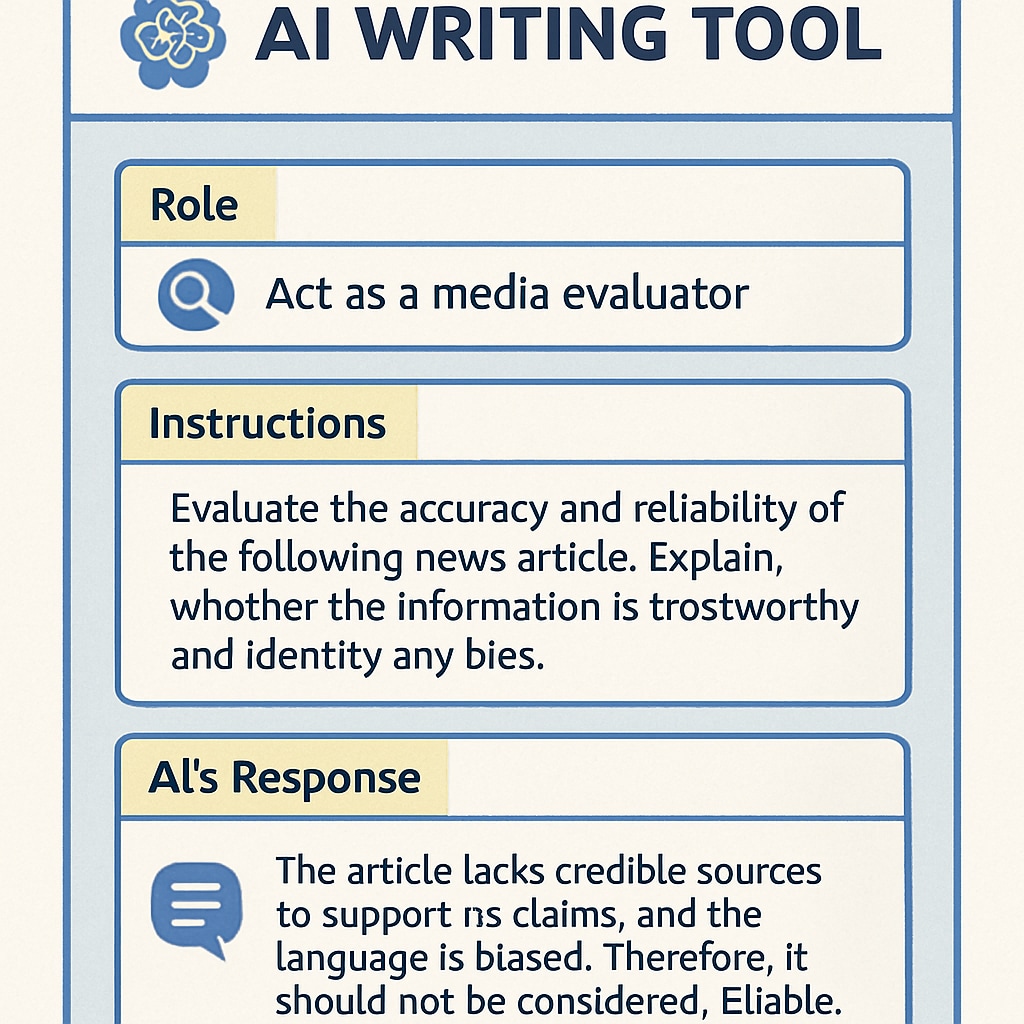In the digital age, educators face the challenge of equipping students with the skills to critically analyze and create media content. Incorporating AI tools for education can provide innovative ways to teach media literacy and critical thinking effectively. This article highlights a free role-based AI writing prompt package tailored for grades 9-12, offering educators a valuable resource to engage students in understanding and navigating the complexities of modern media.
Why Media Literacy and Critical Thinking Matter
Media literacy—the ability to access, analyze, evaluate, and create media—is a cornerstone of education in the 21st century. Combined with critical thinking, it empowers students to differentiate between credible information and misinformation, make informed decisions, and communicate effectively. With students increasingly exposed to digital content, fostering these skills is more important than ever.
AI tools provide an excellent opportunity to address these needs. By simulating real-world scenarios, generating writing prompts, and enabling interactive learning, AI can help bridge the gap between traditional teaching methods and the demands of a digital-first world.

How AI Tools Enhance Media Literacy
AI-powered tools bring versatility and engagement to media literacy education. For instance, AI writing prompts can simulate role-playing exercises where students assume various perspectives—such as a journalist, media editor, or consumer—and create content based on specific scenarios. This approach encourages them to think critically about audience, intent, and credibility.
- Scenario-based learning: AI prompts can immerse students in real-world challenges, such as verifying news articles or creating persuasive digital campaigns.
- Feedback and improvement: AI tools can analyze students’ work and provide constructive feedback to refine their analytical and writing skills.
- Interactive exploration: Tools like chatbots and AI-powered simulations allow students to actively engage with media concepts in a dynamic and personalized way.
As a result, students not only develop media literacy but also learn how to apply critical thinking to real-world contexts—a skill essential for success in both academic and professional environments.

Free AI Writing Prompt Package for Grades 9-12
To support educators in implementing AI tools for media literacy, a free role-based writing prompt package has been designed. This resource includes prompts that align with curriculum goals and encourage creative, critical thinking. Examples of prompts include:
- Journalist role: Write an article verifying the credibility of a trending news story.
- Media editor role: Create a social media post addressing misinformation in a viral video.
- Consumer role: Write a reflection on how advertising influences their decision-making process.
Teachers can customize these prompts based on their students’ needs, fostering collaboration, engagement, and deeper understanding of media principles. By offering students the chance to role-play different perspectives, the prompts help develop empathy and analytical skills, key components of critical thinking.
Incorporating AI Tools into the Classroom
Integrating AI tools into classroom activities can be simple and highly effective. Here are some practical steps for educators:
- Start small: Introduce AI tools in a single lesson or project to gauge students’ interest and learning outcomes.
- Combine with traditional methods: Use AI tools alongside discussions, group work, and hands-on projects to balance digital and interpersonal learning.
- Encourage creativity: Allow students to explore the tools independently, promoting self-directed learning and innovation.
By embracing AI tools, educators can create a dynamic learning environment that prepares students for the complexities of the digital world while enhancing their critical thinking and analytical abilities.
In conclusion, the integration of AI tools into education provides a powerful avenue for fostering media literacy and critical thinking among students. With resources like the free role-based AI writing prompt package, educators can equip students with the skills they need to thrive in an increasingly digital society.
Readability guidance: Use concise paragraphs and lists to organize information clearly; include transitional words frequently; ensure examples are relatable to a high school audience; maintain a balance between technical and accessible language.


